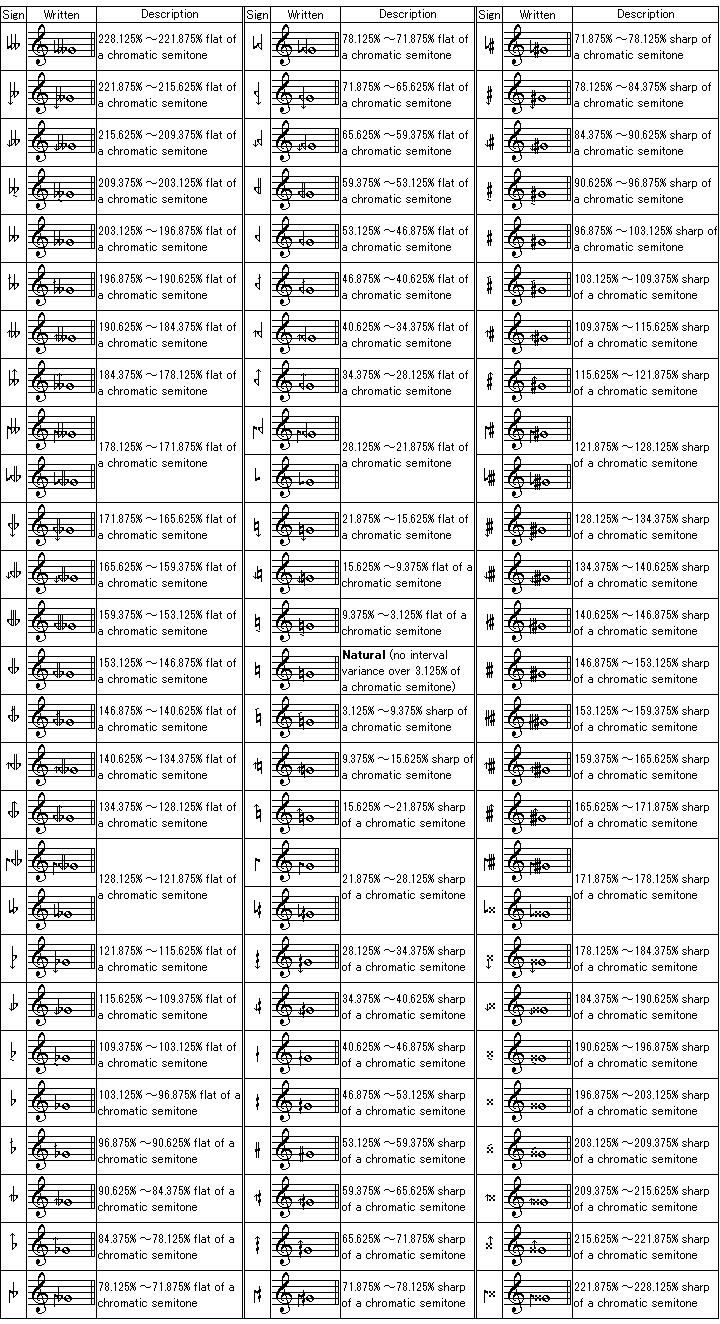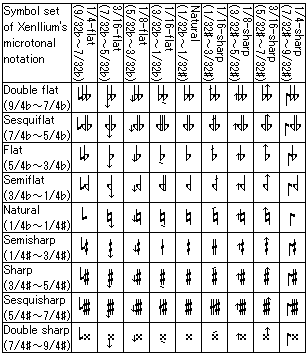User:Xenllium/Xenllium's microtonal notation
Here is a microtonal notation proposed by Xenllium on 15 June 2022.
This notation is valid for any tuning system in which chromatic semitone is represented by between 1 and 16 steps. Alternatively, EDOs with sharpness value between 1 and 16 can apply this notation.
Symbol set
The symbol set comprises traditional accidentals (sharps, flats, and naturals), Stein-Zimmermann quartertone accidentals (semisharps and semiflats), and additional symbols to represent microtone intervals. Some accidentals in this notation are borrowed from Helmholtz-Ellis notation and arranged to represent microtone intervals including quarter-tone, sixth-tone, eighth-tone, tenth-tone, twelfth-tone, fourteenth-tone and sixteenth-tone.
1) The traditional accidentals, as specified in this microtonal notation, modify the note by the sharpness value, which equals the steps of a chromatic semitone (apotome, 2187/2048).
2) The Stein-Zimmermann quartertone accidentals modify the note by half of a chromatic semitone.
3) To modify the note by a quarter of a chromatic semitone, use symbols for septimal comma in Helmholtz-Ellis notation, but also combining to quartertone accidentals.
4) To modify the note by around 1/5 or 1/6 of a chromatic semitone, use symbols for syntonic comma in Helmholtz-Ellis notation, but also combining to quartertone accidentals.
5) To modify the note by around 1/7, 1/8, 1/9 or 1/10 of a chromatic semitone, use symbols for vicesimotertial comma (left-combining up/down arrow) in Helmholtz-Ellis notation, but also combining to quartertone accidentals.
6) To modify the note by around 1/16 of a chromatic semitone, use symbols for undevicesimal comma, tridecimal third-tone or raising undecimal quartertone in Helmholtz-Ellis notation.

